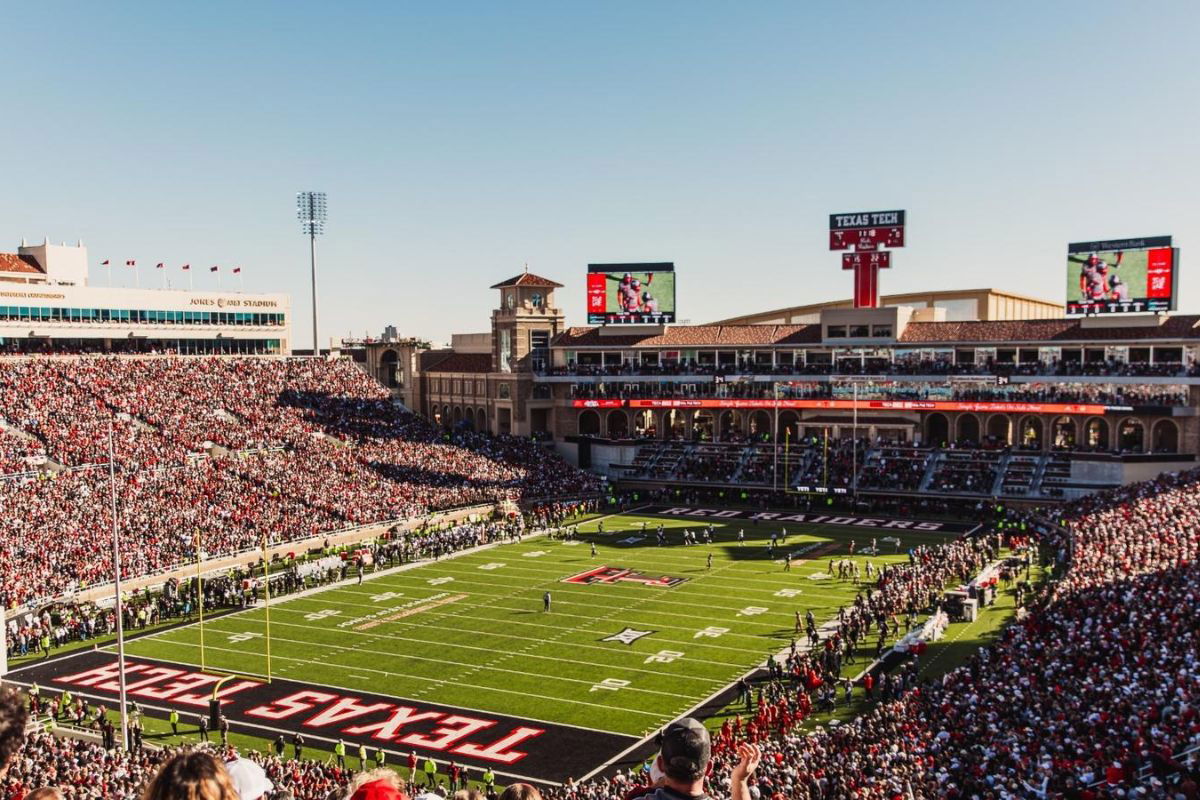

The NCAA’s 119-year amateurism model officially ended on Friday, June 6, with the swipe of a judge’s pen. That’s when the landmark House v. NCAA antitrust settlement got final approval. According to reports, the deal includes a $2.8 billion, 10-year payout to former college athletes for missed NIL opportunities and gives schools the green light to start directly paying current players starting July 1. And now, the NIL era is hitting college football in a way nobody imagined—especially at Texas Tech.
Watch What’s Trending Now!
According to a new report by CBS Sports’ Brandon Marcello, the most expensive college athletic program in the country next season might just be in Lubbock. Joey McGuire’s Red Raiders are suddenly the face of a reported $55 million payout model. The number has sparked outrage, confusion, and curiosity across the college football world, putting McGuire’s program in the middle of a heated national spotlight.
Marcello reported that Texas Tech’s fundraising arm—the Red Raider Club—is now expected to raise $14 million annually to support a $20.5 million revenue-sharing model. On top of that, when NIL money is factored in, the program is expected to spend $55 million across all its sports for the upcoming school year. If accurate, that would make Texas Tech one of the highest-paying college athletics programs in the nation.
ADVERTISEMENT
On June 9, the buzz doubled when Elite College Football posted on Instagram, confirming the whispers: “It’s believed that Texas Tech will pay its players around $55 million between all of its athletic programs (revenue sharing + NIL) 🤯.”
Part of the funding comes from the Matador Club, an NIL collective that’s been supporting Texas Tech athletes for the last three years. That collective is now being folded into the Red Raider Club to operate under one umbrella moving forward. The Matador Club has already earned a reputation for aggressive NIL deals and is credited with helping elevate Texas Tech as an NIL powerhouse.
View this post on Instagram
ADVERTISEMENT
So, where will this money actually go? According to officials, the money will cover revenue-sharing payouts, player scholarships, and other support programs that aim to improve the overall athlete experience on and off the field. As Texas Tech Director of Athletics Kirby Hocutt put it: “As we transition to a new model, know that we are ready. Over the past year, we have studied various impacts of the House settlement on our department and have been ready for this new era in college athletics.”
But not everyone is buying the hype. Despite the impressive dollar figures, fans are questioning what’s really being built in Lubbock—and more importantly, if the money will lead to championships.
ADVERTISEMENT
Fans grow restless despite NIL flex
Texas Tech’s massive investment in student-athletes is making headlines across sports—not just football. Their top softball pitcher, Ni’Jaree Canady, is one of the highest-paid players in her sport. Basketball star JT Toppin is rumored to have landed a $4 million NIL deal to stay at Tech.
But what about the football team? Estimates say the Red Raiders’ football NIL pool is between $20 to $30 million. Still, fans aren’t impressed. “And they still can’t win anything 😂,” one fan commented.
ADVERTISEMENT
Texas Tech finished the 2024 season with an 8–5 record. In 2023? 7–6. Their pass defense last season was statistically the worst in the Big 12, allowing 305.3 passing yards per game. Another fan piled on: “All that for 7-5.”
Even though they were unranked in ESPN’s Way-Too-Early Top 25, they later jumped to No. 16. But the criticism remains sharp—because for all the investment, the trophies haven’t followed. A comment summed it up bluntly: “Paying all that money….any championships?”
Historically, the Red Raiders have only won 11 conference titles in nearly 100 years of football. The last time they shared a conference title was way back in 1994. The only other time they won the Southwest Conference was 1976. NIL money may be flowing, but the banners aren’t.
ADVERTISEMENT
Despite criticism, Texas Tech still has one thing going for it—NFL credibility. The most famous Red Raider of all time, Patrick Mahomes, played his college ball in Lubbock. His presence continues to boost the program’s image. “Mahomes money 💰💰💰💰🤑🤑🤑,” one fan joked online, referencing the quarterback’s support. In August 2023, Mahomes and Adidas announced NIL deals for six Texas Tech athletes. Some fans believe Mahomes’ influence might be connected to the ballooning NIL numbers. And Mahomes isn’t the only big wallet backing the Red Raiders.
Cody Campbell, a major booster, sold his oil and gas company, Double Eagle, to Diamondback Energy for a reported $4.08 billion in February. That’s a lot of capital sitting behind the athletic department. One fan connected the dots: “Considering they’re backed by Mahomes and oil money, they’re not going to enter extreme debt if they don’t have success this year. But, tech hasn’t won 10 games in 15 years. So, it feels like they better find a way to get it done this year…”
Whether it’s Mahomes’ support, booster oil money, or a well-run NIL collective, Texas Tech clearly has resources. The school hasn’t seen a 10-win season since 2008, and the pressure to change that narrative is mounting.
What’s also rising? Expectations. When you’re spending like a playoff contender, fans expect results like one. If 2025 ends with another 8-5 or 7-6 record, the $55 million figure could backfire in perception. Because now, the Red Raiders aren’t just another Big 12 team with potential. They’re the most expensive program in the conversation—and that price tag comes with more than hype. It comes with heat.
ADVERTISEMENT
ADVERTISEMENT
ADVERTISEMENT

